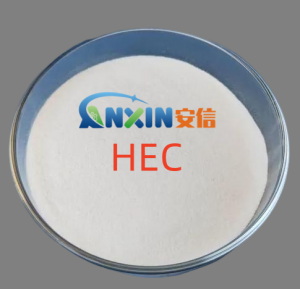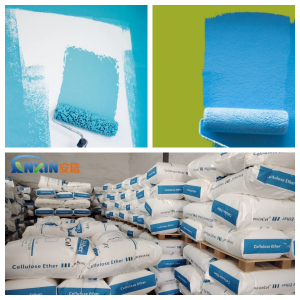Hydroxyethylcellulose (HEC) is a commonly used nonionic cellulose ether that plays a crucial role as a functional additive in water-based systems such as coatings, paints, and adhesives. With the rapid development of environmentally friendly water-based coatings, the demand for both hiding power and film-forming properties continues to rise. HEC, with its unique rheology control capabilities and excellent film-forming properties, has become a crucial tool for enhancing the overall performance of coatings.
1. HEC Mechanism of Action in Coating Systems
HEC exhibits excellent thickening, dispersing, stabilizing, and water-retention properties, effectively improving the fluidity and application performance of coatings. In water-based systems, HEC forms stable hydrogen bonds with water molecules, significantly increasing system viscosity and preventing pigment and filler settling. Furthermore, its excellent water solubility and chemical inertness make it highly compatible with emulsions, pigments, and other additives, paving the way for a uniform, dense film.
HEC molecular chains also form a three-dimensional network within the coating system, improving pigment distribution uniformity and making the paint easier to spread during application. This reduces brush marks and sags, thereby enhancing the coating’s smoothness and gloss. This uniformity directly impacts hiding power and film-forming properties and is key to achieving a high-quality coating appearance.
2. How HEC Improves Hide
The hiding power of a coating depends on the distribution of pigments within the film and their light-scattering properties. HEC thickening and dispersing properties stabilize the pigment suspension, preventing flocculation and sedimentation, ensuring uniform pigment distribution during application and drying. Uniformly arranged pigment particles within the film maximize light reflection and scattering, enhancing hiding power.
Furthermore, HEC improves coating leveling, ensuring a more even application and preventing brush marks and streaking. This uniform application not only enhances hiding power but also reduces color variations caused by localized thickness variations. Appropriate application of HEC is particularly crucial for interior latex paints or high-whiteness architectural coatings, which require high hiding power.
3. HEC Mechanism for Improving Film-Forming Performance
HEC acts as a film-forming accelerator during the film-forming process. Its molecules maintain the coating’s wetness during the evaporation phase, slowing drying. This allows the emulsion particles ample time to migrate, deform, and fuse, ultimately forming a continuous, dense film. This property effectively prevents pinholes, cracking, and cratering caused by overly rapid drying.
HEC excellent water retention ensures that the substrate surface maintains a moderate moisture level after application, preventing film defects caused by rapid water absorption. In low-temperature environments and on highly water-absorbent substrates, the presence of HEC significantly enhances the integrity and adhesion of the emulsion film, making the coating more scrub-resistant and durable.
4. Synergistic Effect of Dual Enhancements
In practical applications, HEC achieves a new balance in coating performance by providing a dual improvement in both hiding power and film-forming properties. Enhanced hiding power ensures the coating’s visual appeal and application economy, while optimized film-forming properties guarantee mechanical strength and longevity. The synergistic effect of these two factors not only results in a coating with a delicate appearance and rich colors, but also boasts excellent stain, abrasion, and mildew resistance.
For example, in high-quality interior latex paints and exterior protective coatings, the appropriate selection of HEC with varying degrees of substitution and viscosity allows for targeted rheological control, achieving an excellent balance between application feel and film-forming properties.
HEC, with its superior rheological control and water-retention capabilities, enhances both hiding power and film-forming properties. It not only improves application and appearance, but also enhances the coating’s density and durability. With the increasing popularity of environmentally friendly water-based systems, the application value of HEC in future coatings will become increasingly prominent, making it an indispensable key additive in achieving high-performance coating formulations.
Post time: Oct-18-2025








